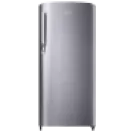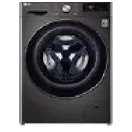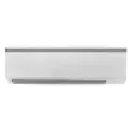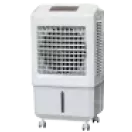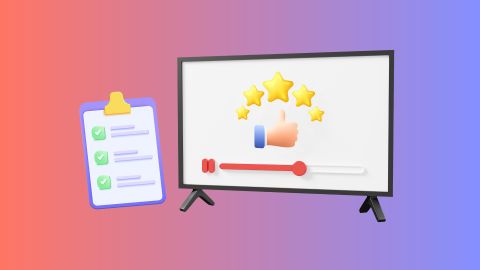3 min
3-Jan-2025
Geysers are among the most power-intensive appliances in households. Their energy consumption depends on capacity, usage patterns, and insulation efficiency. Understanding your geyser's power usage can help you optimise energy costs and make informed decisions for energy-efficient options.
Introduction to geyser power consumption
Geysers are essential appliances in homes, providing hot water for bathing, cleaning, and other daily tasks. However, they are also among the most power-hungry devices, consuming significant electricity based on their capacity, usage duration, and energy efficiency. Understanding how much power your geyser consumes can help you manage energy costs effectively.
Modern geysers, such as 10 litre water geysers, are designed to optimise energy efficiency while delivering consistent performance. Choosing the right capacity and energy-efficient model can significantly reduce monthly electricity bills and minimise environmental impact.
The formula for calculating power consumption is:
Energy consumption (kWh) = Power rating (kW) × Hours of use per day
For example, if a geyser has a power rating of 2,000 watts (2 kW) and is used for 2 hours daily:
2 kW × 2 hours = 4 kWh per day
To estimate monthly consumption:
4 kWh × 30 days = 120 kWh per month
Multiply this by your local electricity tariff to calculate the monthly cost.
Energy efficiency ratings also play a crucial role. Models like the Bajaj 5-litre water geyser are designed for optimal energy use, reducing overall costs.
Factors like water inlet temperature, thermostat settings, and insulation quality can further impact power consumption. By regularly maintaining your geyser and using it efficiently, you can minimise energy waste and maximise cost savings.
If you are looking to buy a geyser, visit one of our partner stores, pick the model of your choice, and convert its cost into Easy EMIs. With a flexible repayment tenure of up to 60 months. This financing solution from Bajaj Finserv is available on 1 million products.
Modern geysers, such as 10 litre water geysers, are designed to optimise energy efficiency while delivering consistent performance. Choosing the right capacity and energy-efficient model can significantly reduce monthly electricity bills and minimise environmental impact.
How does a geyser work, and why it consumes power
- Geysers heat water using an electric heating element or a gas burner, depending on the model.
- Inelectric water geysers, electricity flows through a heating element, generating heat that raises the water temperature.
- The thermostat maintains the water temperature by turning the heating element on and off as needed.
- Insulation quality determines how well the geyser retains heat, reducing the frequency of reheating cycles.
- Larger-capacity geysers consume more power as they require longer heating durations.
- Continuous usage or frequent reheating cycles significantly increase energy consumption.
- Modern geyserscome with advanced energy-saving features to optimise power usage. Choose your own model with the latest water heaters on EMI
- Regular maintenance, such as cleaning sediment build-up, helps improve heating efficiency and reduce energy wastage.
Factors affecting geyser power consumption
- Capacity: Larger geysers consume more power as they require more energy to heat a larger volume of water.
- Usage frequency: Frequent use and reheating cycles significantly increase electricity consumption.
- Thermostat settings: Higher thermostat settings require more power to maintain elevated water temperatures.
- Insulation quality: Well-insulated geysers retain heat longer, reducing the need for frequent reheating.
- Energy efficiency rating:5 star water geysers are more energy-efficient and consume less electricity over time.
- Water inlet temperature: Colder water requires more energy to heat, increasing electricity usage.
- Heating element quality: A high-quality heating element ensures efficient power usage and faster heating.
- Sediment build-up: Accumulated sediment reduces heating efficiency and increases power consumption.
Comparing different types of geysers: electric, gas, solar
Electric geysers:- Use an electric heating element to heat water.
- Easy to install and ideal for households with reliable electricity supply.
- Higher operating costs due to electricity tariffs.
- Use LPG or PNG gas burners for heating water.
- Faster heating time compared to electric geysers.
- Lower operational cost but require proper ventilation for safety.
- Use solar energy to heat water through solar panels.
- Environmentally friendly with negligible operating costs.
- Higher upfront cost but significant savings in the long run.
- Cost efficiency: Solar > Gas > Electric
- Ease of installation: Electric > Gas > Solar
- Environmental impact: Solar > Gas > Electric
- Heating speed: Gas > Electric > Solar
How to calculate the power consumption of a geyser
Understanding your geyser's power consumption helps manage electricity bills and choose energy-efficient models.The formula for calculating power consumption is:
Energy consumption (kWh) = Power rating (kW) × Hours of use per day
For example, if a geyser has a power rating of 2,000 watts (2 kW) and is used for 2 hours daily:
2 kW × 2 hours = 4 kWh per day
To estimate monthly consumption:
4 kWh × 30 days = 120 kWh per month
Multiply this by your local electricity tariff to calculate the monthly cost.
Energy efficiency ratings also play a crucial role. Models like the Bajaj 5-litre water geyser are designed for optimal energy use, reducing overall costs.
Factors like water inlet temperature, thermostat settings, and insulation quality can further impact power consumption. By regularly maintaining your geyser and using it efficiently, you can minimise energy waste and maximise cost savings.
If you are looking to buy a geyser, visit one of our partner stores, pick the model of your choice, and convert its cost into Easy EMIs. With a flexible repayment tenure of up to 60 months. This financing solution from Bajaj Finserv is available on 1 million products.
Explore geysers on EMI with Bajaj Finserv
If you are looking for an energy-efficient geyser, Bajaj Mall has a variety of models to suit your home and budget. After checking the specifications and reviews, head to your nearest Bajaj Finserv partner store to make your selection. With Bajaj Finserv’s financing plans, owning a geyser becomes easy and affordable. Flexible repayment tenures allow you to comfortably manage your expenses without financial strain.Benefits of shopping with Bajaj Finserv
- Affordable pricing: Get budget-friendly deals on geysers across Bajaj Finserv partner stores, ensuring value for your money.
- Easy EMI: Spread the cost of your geyser purchase with Bajaj Finserv’s flexible repayment options using Easy EMI.
- Zero down payment: Enjoy zero upfront costs on select geyser models, allowing you to start using your product without an initial payment.
- Wide range and accessibility: Explore an extensive collection of geysers on Bajaj Finserv partner stores and find the perfect fit for your home.
- Special deals and cashback: Benefit from exciting cashback offers and exclusive discounts on geysers financed.
- Complimentary home delivery: Selected geyser models come with free home delivery, ensuring a hassle-free purchase experience.
Geysers
Brands
Litres
Bajaj Finserv App for all your financial needs and goals
Trusted by 50 million+ customers in India, Bajaj Finserv App is a one-stop solution for all your financial needs and goals.
You can use the Bajaj Finserv App to:
Apply for loans online, such as Instant Personal Loan, Home Loan, Business Loan, Gold Loan, and more.
You can use the Bajaj Finserv App to:
Apply for loans online, such as Instant Personal Loan, Home Loan, Business Loan, Gold Loan, and more.
- Explore and apply for co-branded credit cards online.
- Invest in fixed deposits and mutual funds on the app.
- Choose from multiple insurance for your health, motor and even pocket insurance, from various insurance providers.
- Pay and manage your bills and recharges using the BBPS platform. Use Bajaj Pay and Bajaj Wallet for quick and simple money transfers and transactions.
- Apply for Insta EMI Card and get a pre-approved limit on the app. Explore over 1 million products on the app that can be purchased from a partner store on Easy EMIs.
- Shop from over 100+ brand partners that offer a diverse range of products and services.
- Use specialised tools like EMI calculators, SIP Calculators
- Check your credit score, download loan statements, and even get quick customer support—all on the app.
Frequently asked questions
What is the average power consumption of a geyser?
The average power consumption of a standard geyser ranges from 1,500 to 3,000 watts per hour, depending on its size, thermostat settings, and insulation quality. Frequent reheating cycles and poor insulation can increase power usage.
How can I reduce the electricity bill for my geyser?
To reduce your geyser’s electricity bill, use a timer to control operating hours, maintain optimal thermostat settings (around 50-60°C), ensure proper insulation, and consider switching to energy-efficient or 5-star rated geysers.
Do solar geysers consume less power than electric ones?
Yes, solar geysers are more energy-efficient as they rely on sunlight to heat water. While they have a higher initial cost, they significantly reduce electricity consumption, making them more economical in the long run compared to electric geysers.
Is it safe to use a geyser continuously for long hours?
It is not recommended to run a geyser continuously, as it increases energy consumption and shortens the appliance’s lifespan. Instead, use it only when needed and maintain an optimal thermostat setting to avoid unnecessary power usage.
What is the average power consumption of a geyser?
The average power consumption of a standard geyser ranges from 1,500 to 3,000 watts per hour, depending on its size, thermostat settings, and insulation quality. Frequent reheating cycles and poor insulation can increase power usage.
Show More
Show Less

